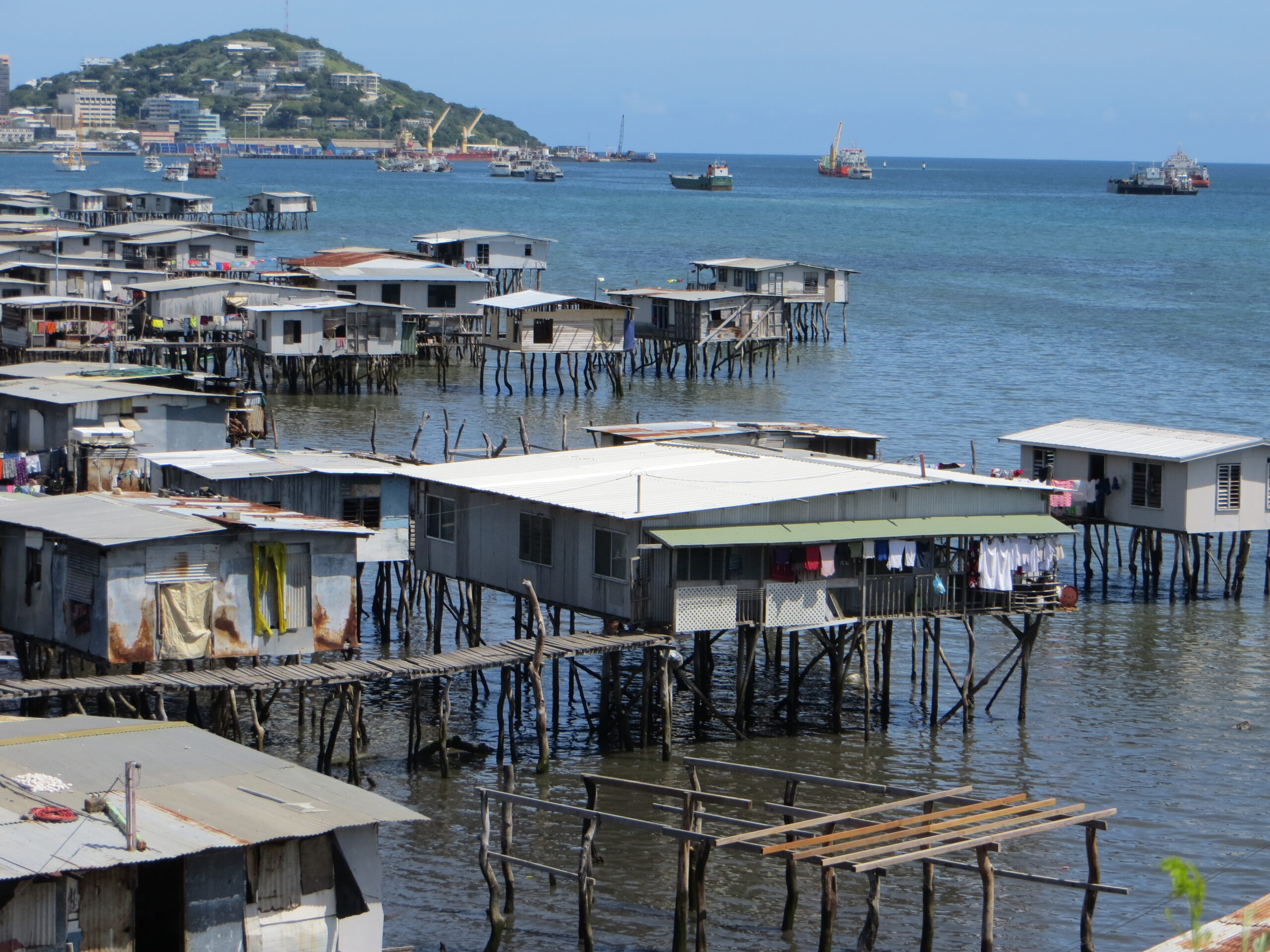
The distant photographs of the “settlements” that stretch out into the blue waters of the sea near Port Moresby have a charming appeal. It’s romanticized life in the tropics, life enjoying the gentle sea breezes, the lapping waves lulling you to sleep. It looks beautiful – from a distance. Imagine living over water, yet having none to use to bathe, wash clothes and dishes, cook with or even just have a refreshing drink. Imagine a house on stilts, high above the seawater when the tide is out, but water lapping underneath when the tide is in. Imagine the stinking water under the house, seething with dirt and garbage and human waste, flowing in and out with the tide under the myriad array of stilt-houses connected one to another and stretching far out from shore – an ever-growing living structure. This is the life of the settlements that grow out over the water, a no-man’s land with no organization and no formal rules, where shanty houses are connected together in a rugged community clinging to the shore yet suspended over the surging seas. These settlements have no plumbing and no electricity. Extended families crowd into these rugged houses made from jungle materials, scrabbled together with poles, metal sheets, discarded lumber and plastic. There’s plenty of water just under the house – yet it’s salt water and it’s teaming with all sorts of dangers from the rot, rubbish and refuse – the constant byproduct of human existence that’s just dumped under the houses and into the sea. The pictures look beautiful from a distance. One could almost be forgiven for yearning for that quiet peaceful respite from life. But real life, beneath the surface of the charming picture, means a daily struggle for existence, for just basic needs like fresh clean water to drink. By: Major Curtiss Hartley, a Central Territory officer stationed in Papua New Guinea
